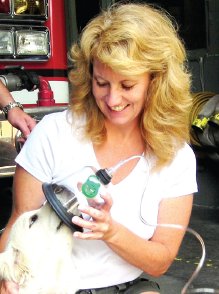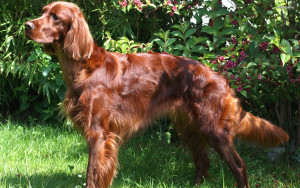In honor of our patron, Saint Patrick, a holiday we all love to celebrate, and of course being a Bostonian … let’s review the list of Celtic Canines of Ireland.
Who knew there were so many breeds? Well, there are and all are adorable high energy and a bit flirtatious. Must be a trait from the homeland.
A complete list with description provided by VIP – Veterinary Pet Services: vipinsurance.com
1. GLEN OF IMAAL TERRIER: Sometimes called the Irish Glen of Imaal Terrier or the Wicklow Terrier, most owners simply call the breed “Glen.”Per its namesake, the breed originates from the Glen of Imaal in County Wicklow, Ireland, where it came into existence during the reign of Elizabeth I. Bred to hunt rats, foxes, badgers and otters, the terrier is also a good herder and is known to be a quiet dog. The Glen of Imaal terrier nearly faced extinction in the late 19th century. Due to revival efforts during the early 20th century, the breed survived but is today one of the rarest dog breeds and the least-known Irish breed.
2. IRISH RED AND WHITE SETTER: Up until the late 19th century, all Irish setters were mainly red, although some setters were born with a spattering of white color and some with an entirely white coat. The breed was categorized as one until 1875, when a large amount of solid red setters were entered into a conformation dog show and gained a great deal of attention. As the popularity of the red setter increased, the quantity of red and white colored setters began to decrease, almost to the point of extinction. Breeders in Ireland have kept this little-known breed alive; today, the dogs are accomplished hunters of game birds such as quail, willow grouse, sand grouse, guinea fowl, sagehen and francolin.
3. IRISH SETTERS: A popular dog breed in the U.S., there is much speculation about the origins of the Irish setter. Its ancestry can be traced to a dog known as the setting spaniel, and crosses were made with pointers, English setters, Gordon setters and other spaniels. Though the Irish setter is not as in demand as it was at the height of its popularity in the 1970s, it is still a sought-after breed because of its exuberant personality and beautiful appearance. These dogs have an outgoing, fun-loving personality and can make excellent companions with the proper training.
4. IRISH TERRIERS: Although considered one of the oldest terrier dog breeds, the origins of the Irish terrier remain a bit of a mystery. The earliest known images of the Irish terrier appear in paintings dating back to the 1700’s, although many believe the Irish terrier’s origins go back as far as two thousand years. The Irish terrier is considered a terrific family companion — good-natured with children (especially active ones), and is entertaining and playful. Irish terriers are always ready for a spirited adventure and are known to be courageous, loyal and energetic.
5. IRISH WATER SPANIEL: One of the oldest spaniel dog breeds, the Irish water spaniel is considered rare today, in terms of how many are registered. A native to Ireland going back 1,000 years, the Irish water spaniel is the subject of folklore, believed to be a descendant of the Dobhar-chú, a water hound that is a cross between a dog and an otter. The Irish water spaniel is known for its intelligence and its unusual purple-hued, curly fur coat. Also unique to the breed: its “rat like” tail, which is hairless. While the dog’s body is covered in dense curls, is face is completely smooth. The Irish water spaniel is also the largest of spaniels, weighing, on average, between 55 and 65 pounds. The breed has a rugged build and webbed feet, contributing to its excellent swimming skills.
6. IRISH WOLFHOUNDS: With its large size and shaggy coat, the Irish wolfhound is a somewhat intimidating-looking dog. Don’t judge a book by its cover: The Irish wolfhound has the grace and speed of a greyhound, the gentle, loyal nature of a Great Dane, and the protectiveness of a mastiff. While speculation exists that the breed was brought to Ireland by early settlers in 3500 BC, historical accounts — one written by Roman emperor Julius Caesar — describe Irish wolfhounds fighting alongside Celts in the Gallic Wars during 391 BC. What is known is that the dog was originally bred to be a war dog, and a trained guardian of homes and Irish livestock. The Irish wolfhound’s speed and intelligence made it ideal for hunting, particularly wild boar and wolves, a result of which both remain extinct to this day in Ireland. As companions, the breed began living side by side with their owners and became further domesticated; today the Irish wolfhound is considered a popular family companion.
7. KERRY BEAGLE: Another Irish dog breed that nearly faced extinction: the Kerry beagle, one of Ireland’s oldest hounds. Many believe this breed is a descendant of the Celtic hound, a Gaelic Irish legend depicted in artwork dating back to the 17th century. The oldest Kerry beagle pedigree can be traced back to 1794. The Kerry beagle was bred as scent hound to track game. Today, the breed is used to hunt foxes.
8. KERRY BLUE TERRIER: Sometimes called the Irish blue terrier, the Kerry blue terrier was bred to hunt rodent, rabbits, foxes, otters and badgers and herded sheep and cattle. Discovered in the Kerry Mountains in Ireland during the 19th century, the dog became well known as a good all-around farm dog in rural areas of Ireland. Despite winning Crufts (the largest international dog show held annually in the United Kingdom) in 2000, the breed remains relatively unknown today and not very popular. The Kerry Blue terrier has a distinct soft, wavy coat that does not shed. Born with a black fur coat, the dog’s coat gradually turns into one of several shades of blue-grey by two years of age.
Interesting fact: A Kerry blue was the first dog registered with the Irish Kennel Club.
9. WHEATEN TERRIER: Commonly referred to in Ireland as the “poor man’s wolfhound,” this breed is also known as the Irish soft coated wheaten terrier, the wheaten, and the soft coated wheaten terrier. Bred as an all-purpose farm dog during the early 1800s, today the breed is skilled in obedience, agility and tracking. Like the Kerry Blue, the wheaten terrier does not shed any hair. Puppies are born with a darker coat (either red, brown, white or mahogany), which gradually turns white and then matures into a wheaten color as they age. The breed’s coat can be one of four varieties: traditional Irish (thin and silky), American (thick and woolly), English (loose curls or waves) and heavy Irish (a combination of Irish, English and American). Highly intelligent, the wheaten is easy to train, loves people, and socializes well.
And well … a “Tracey favorite” – my add on … #10
10. BOSTON TERRIER: Well not from Ireland, but a true Bostonian favorite. In fact the BT is the official State dog for Massachusetts. Boston Terriers are lively, their affectionate nature makes them extremely loveable, though their sometimes-stubborn nature or spurts of hyperactivity can land them in hot water with their owners. They can be a bit witty in nature and a little stubborn, but will turn around with an apology with their big brown eyes and a warm kiss. They love children and are especially good companions for older people and apartment dwellers.

Tracey Zysk, owner of Wiggles & Jiggles Pet Care in North Andover MA is a local pet care professional. She has been featured on local radio, TV and newspapers educating the general public on animal care and animal health & wellness. Tracey is a proud supporter of Police, Fire & Military K9 units and National Award winner of the Platinum PAW award. Tracey may be reached at wigglewalk@comcast.net. Become a fan on Facebook at Wiggles & Jiggles Pet Care

